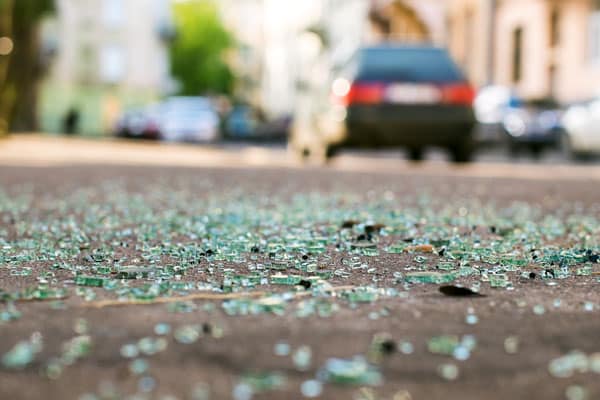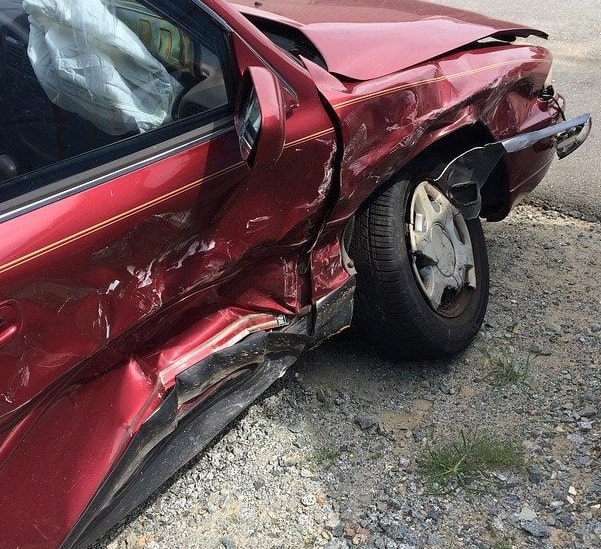Damaging your car in an accident can be stressful. Luckily, it’s easy to make a car insurance claim – especially if you’re with Blue Badge Insurance. Even if it might feel daunting at first.
Follow these steps to lodging a claim and you’ll be sorted before you know it. So at least that’s one less thing to worry about when something’s gone wrong.
Here’s the process, broken down into manageable steps.
How to make a car insurance claim
So, you’ve had an accident. Before you worry about insurance, your first priority should always be making sure that you get home unscathed.
If you’ve never had an accident but are just making sure that you’re prepared for a car insurance claim in future, we commend your responsibility! Find out what to do if you have a car accident here. Now you’re doubly prepared.
If you’ve just had an accident, once you’re home safe and sound follow these steps to lodging your claim.
1. Get as much information as possible.
For your claim to be processed efficiently, you’ll need to have as much information on hand as possible. Make sure you’ve got all the correct documentation and information before you lodge the claim. It’ll be easier and faster for both you and your insurance provider.
To keep the claims process as hassle-free as possible after an accident, make sure you have the following information:
- Details of the person driving your car (phone number, name, licence details) and all other people involved in the accident
- Make, model, colour, and number plate of any cars involved in the accident
- Name and phone number of any witnesses willing to share details of what they saw
- The location of the accident and the weather at the time
- A detailed description of the accident, including what happened with each car from which direction and what damage there was to the cars involved. If you’re able to provide photos to support your claim, that’s even better
- Police report number, if relevant
- Tow truck company details, if applicable
Use your phone to take photos of the cars, number plates, driver licences, accident scene and anything else (where safe to do so). Often, your memory of the accident isn’t as good as you think it will be a few hours, days, or weeks later. Shock can also play a role in confusing things.
2. Lodge the car insurance claim
Depending on your insurance provider, you can start the actual claims process either online or via your PC.
If you’re with Blue Badge Insurance, you can notify us via email or phone. A claims officer will contact you shortly afterwards to discuss the next steps and check you’re ok. Visit our claims page here for more information.
3. Find out about out-of-pocket expenses
At this stage, you probably want to get an idea of whether you need to tap into your savings for out of pocket expenses. Looking over your car insurance policy will give you a good idea of what you might be expected to pay. If you’re insured with us then check your product disclose statement here.
Check for any exclusions – these will differ between car insurers. For instance, a policy might state that any accident which occurs when the driver is over the blood alcohol limit won’t be covered. Or it may say the policy doesn’t cover an unlisted driver who was at the wheel at the time of accident. Any exclusions will be clearly stated.
Your excess, if applicable, is something that you’ll need to cover from your own pocket. Here’s a great article that helps explain car insurance excess.

4. Wait for your insurer
Once your car insurance claim has been made and all required documentation has been received, your insurance provider must contact you within 10 days. These 10 days allow your insurer to conduct an investigation into the accident. This might involve calling witnesses, other drivers, the other party’s insurer and/or the police to help inform their decision.
Your insurance provider will be in contact within this period to let you know whether your claim was accepted or denied. Hopefully, it will be accepted easily and without hassle.
However, if your claim was denied, you must be advised of this in writing. Here is some useful information about your insurer’s legal obligations when it comes to your car insurance claim.
5. Assess your options
So, your car insurance claim has been successfully lodged. Your insurer has assessed how much the repairs will cost. If the damage is extensive, it may deem the vehicle a ‘total loss.’ In this case, the insurer is legally required to submit a ‘written off notification’ to your state or territory. Your (ex) vehicle will be added to the written off vehicle register.
If your vehicle is repairable, you’ll then have to decide whether to continue with the claim. At any point, you can withdraw your claim and handle the damages privately. Obviously, the right decision depends on a few different factors.
If the repairs aren’t major, you might find the cost is only slightly higher than your excess. In this case, you might decide it’s better to forego the claims process and pay for the repairs yourself. Keep in mind if you do make a car insurance claim, your premium may be higher at your next policy renewal.
If the other party was at fault, it’s possible their insurer may pay for your out of pocket expenses. But that’s not guaranteed. Plus it could take your insurer weeks to receive payment from the other party’s insurer.
This means you could be waiting a while to have your excess paid. That is, unless you’re a Blue Badge Insurance customer. If our insurance underwriter deems you’re not at fault and you’ve supplied the at-fault party’s name, address and registration number then we waive your excess.
6. Let your insurance provider advise you on what to do next
If your claim is accepted, your insurance provider will advise the next steps. f you decide to go ahead with the claim, it will do one of the following:
Repair the car with its chosen repairer
If this happens, your insurance provider will be responsible for ensuring any repairs happen in a timely manner and to a high standard. If repairs aren’t done properly, the insurance provider also responsible for fixing it.
Check your product disclosure statement for more details. For example, some insurance providers offer a lifetime guarantee on repairs they facilitate.
Pay to have the car repaired by a repairer of your choice
In some instances, you may be able to use a repairer of your choice. If this happens, you’ll need to source your own quotes and deal directly with the company or individual doing the repairs. If there are any issues around the quality or timeliness of repairs, your insurance provider has no responsibility to help.
Write the car off
If your car can’t be repaired safely or the costs would be too high to make repair a viable option, your insurer may write off your car.
In this case, you will be paid out for it. Depending on your car insurance policy, you may get a fixed amount pay out, or be paid out for the current market value of the car. Read up on why it’s important to know the value of your disability converted car here.
Remember, although these steps cover what to do when you need to claim after an accident, theft and other damages can happen too.
Car key theft is an increasing problem in Australia. Being complacent about it could lead to your vehicle being stolen. Read more in our article about how to prevent car theft by keeping your car keys safe.

Unhappy with how your car insurance claim was handled?
If you’re unhappy with your claim in some way, you should first lodge a complaint directly with the insurer. Depending on your grievance, they may be able to rectify it so that all parties are satisfied.
If, however, you’re not able to reach an agreement you can take your dispute to the Australian Financial Complaints Authority.
Choose the right insurance provider
When it comes to making a car insurance claim, having the right insurance provider can help ease your mind. Consider a disability insurance specialist like Blue Badge Insurance. We’re with you from start to finish and pride ourselves on excellent customer service.








